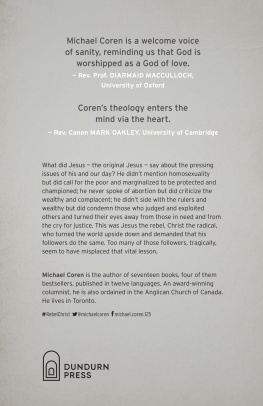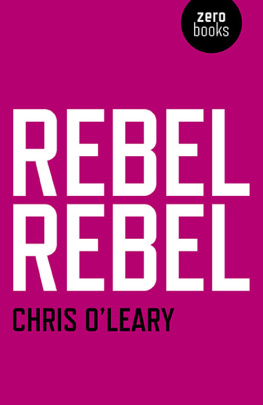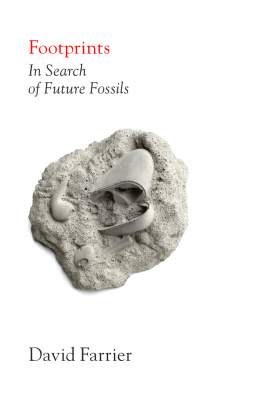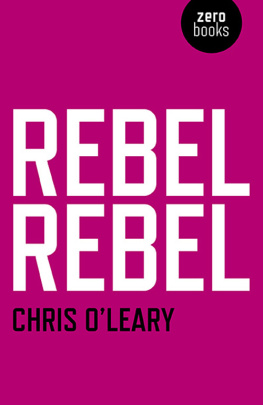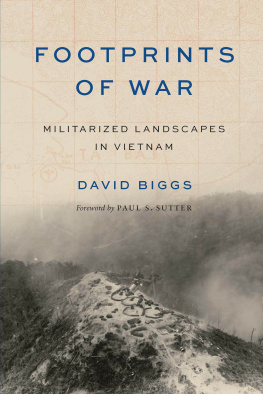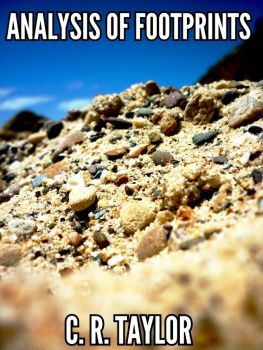Informative and well-judged... There is so much that is inspirational in this book
NICHOLAS LEZARD, Guardian
You havent walked the streets of London unless youve understood the secret history of revolt and rebellion hidden all around you. Rosenberg takes you there as no other writer has done
PAUL MASON
David Rosenbergs subtle, wide-ranging Rebel Footprints connects place to place and era to era... A book of detail and passion
DANNY DORLING,
author of Inequality and the 1%
This brilliant book is a fitting testimonial to the collective struggles of Londoners of every colour and creed
FRANCES OGRADY,
General Secretary of the TUC
Anyone who wants to know how the individual human spirit can assert itself, whether in the city or the suburbs, could do no better than turn to Rebel Footprints
JACQUELINE BANNERJEE,
Times Literary Supplement
Rosenberg brings his London stories and their characters alive
DAVE HILL, Guardian


This edition published 2019 by Pluto Press
First published 2015 by Pluto Press
345 Archway Road, London N6 5AA
www.plutobooks.com
Copyright David Rosenberg 2015, 2019
The right of David Rosenberg to be identified as the author of this work has been asserted by him in accordance with the Copyright, Designs and Patents Act 1988.
British Library Cataloguing in Publication Data
A catalogue record for this book is available from the British Library
ISBN 978 0 7453 3856 9 Hardback
ISBN 978 0 7453 3855 2 Paperback
ISBN 978 1 7868 0414 3 PDF eBook
ISBN 978 1 7868 0416 7 Kindle eBook
ISBN 978 1 7868 0415 0 EPUB eBook
This book is printed on paper suitable for recycling and made from fully managed and sustained forest sources. Logging, pulping and manufacturing processes are expected to conform to the environmental standards of the country of origin.
10 9 8 7 6 5 4 3 2 1
Illustrations: Chris Browne
Typesetting: Melanie Patrick
For Julia, Jacob and Reuben,
and in memory of a ground-breaking London historian,
Bill Fishman (19212014)
CONTENTS
ACKNOWLEDGEMENTS
I would like to thank the staff at Pluto Press, who have been consistently encouraging and helpful. Thanks to the staff of the libraries and archives who have provided access to historical materials and assistance with images: Bishopsgate Institute (special thanks to Stefan Dickers); British Library Newspaper Archive; East End Womens Museum; Hull History Centre; Humanist Library, Conway Hall; Labour History Archive at the Peoples History Museum; LSE Reading Room; Marx Memorial Library; Modern Records Centre, Warwick University; Southwark Local History Library; Tower Hamlets Local History Library; TUC Library Collections; Wandsworth Heritage Service; Womens Library at LSE; and the Working Class Movement Library. Thanks to City Lit students who road-tested several walks and gave invaluable feedback. Special thanks to Chris Browne at Pluto Press for mapping the walks so imaginatively and helping with photos. Thanks also to musician, activist and fellow West Ham fan, Billy Bragg, for his foreword to the first edition, and to writer, broadcaster and activist Ash Sarkar for her foreword to this second edition. Finally I would like to thank Julia Bard for expert editorial advice and personal encouragement and support.
FOREWORD
Which is the biggest gang in London? In the years following the 2011 riots after the killing of Mark Duggan, territories have become ever more fragmented and fractious. Postcode wars are getting smaller. But perhaps its time to cede the honour to the Metropolitan Police. Despite our CCTV-saturated streets, not a single officer has been successfully convicted in a criminal court for any of the 180-plus deaths at their hands since the millennium. The majority of the victims were in custody, but 22 were shot and 44 died during pursuit.
Now, though, even the Metropolitan Police find that their domain is under threat from interlopers. Youll see them around Camden, Greenwich, Newham, Tower Hamlets. The footsoldiers of gentrification trussed up in stab-proof vests and hi-vis, clunky walkie-talkies clipped to the waist. These private security workers are to police what hoverflies are to wasps; responding to noise complaints and displacing rough sleepers on behalf of whatever housing association or corporation it is they work for.
But their power rests on more than imitation. London is in the middle of a wave of urban enclosures except this time, there arent any fences to let you know when youre on private land. The only way youll know is when a security worker orders you to stop doing something like filming, drinking, or lying down on the wrong bit of grass. Corporations are winning a turf war that most of the city doesnt even know its fighting.
As David Rosenberg explores in this book, London has always been a city of thieves. Not just muggers and cutpurses but, as pointed out in a new chapter, also the wardens of Fleet Prison, who would charge prisoners for food, lodging and the privilege of being unshackled. The jailers racket of the eighteenth century has enjoyed a second-life in the modern day, as G4S, Serco and Sodexo lap up lucrative contracts to incarcerate one of the biggest prison populations of any country in Europe.
A second new chapter includes a social commentators disparaging quote about the nineteenth-century slums in Bethnal Green and Shoreditch: Industry is the exception, robbery is the rule. With rents for a one-bedroom flat costing around 2,000 a month on Boundary Street in 2018, the landlord class have certainly kept the spirit of Old Nichol alive.
But as Rebel Footprints reminds the reader at each turn, London isnt just the product of scams and exploitation, but of collective struggle too. Our city belongs to the tailors and bakers, the matchwomen, rioters and rent strikers and perhaps if we draw inspiration from these repertoires of organising and insurrection, it could belong to us too. This book isnt a mere guided tour of Londons curios. Its the basis of a radical project in its own right. Its a call to walk the streets, and learn their histories, so that we might just one day run this city.
Ash Sarkar
INTRODUCTION
REBELLIOUS CITY
London from the 1830s to the 1930s
[A]gainst those who laud the present state of society, with its unjustly rich and its unjustly poor, with its palaces and its slums, its millionaires and its paupers, be it ours to proclaim that there is a higher ideal in life than that of being first in the race for wealth... Be it ours to declare that health, comfort, leisure, culture, plenty for every individual are far more desirable than the breathless struggle for existence, furious trampling down of the weak by the strong, huge fortunes accumulated out of the toil of others, to be handed down to those who had done nothing to earn them.
Annie Besant
The writer and activist Annie Besant wrote these extraordinary lines in 1885, when she was living in the comfort of Londons West End but becoming increasingly immersed, albeit transiently, in the struggles for better lives led by impoverished Eastenders. She depicts a city mired in conflict between the powerful and the marginalised, the exploiters and the exploited, and the brazen sense of entitlement by those who were ravaging the lives of an underclass. Her description reads just as hauntingly today as the struggles for a more equal city that marked the decades after the Second World War have given rise to a widening gap between Londons rich and poor. The wealthy classes are rampantly recolonising significant pockets of inner London, expanding the number of gated communities, installing exclusive boutiques, gyms, restaurants and luxury outlets, while pushing long-standing residents towards the city limits, where new pound shops open weekly.








